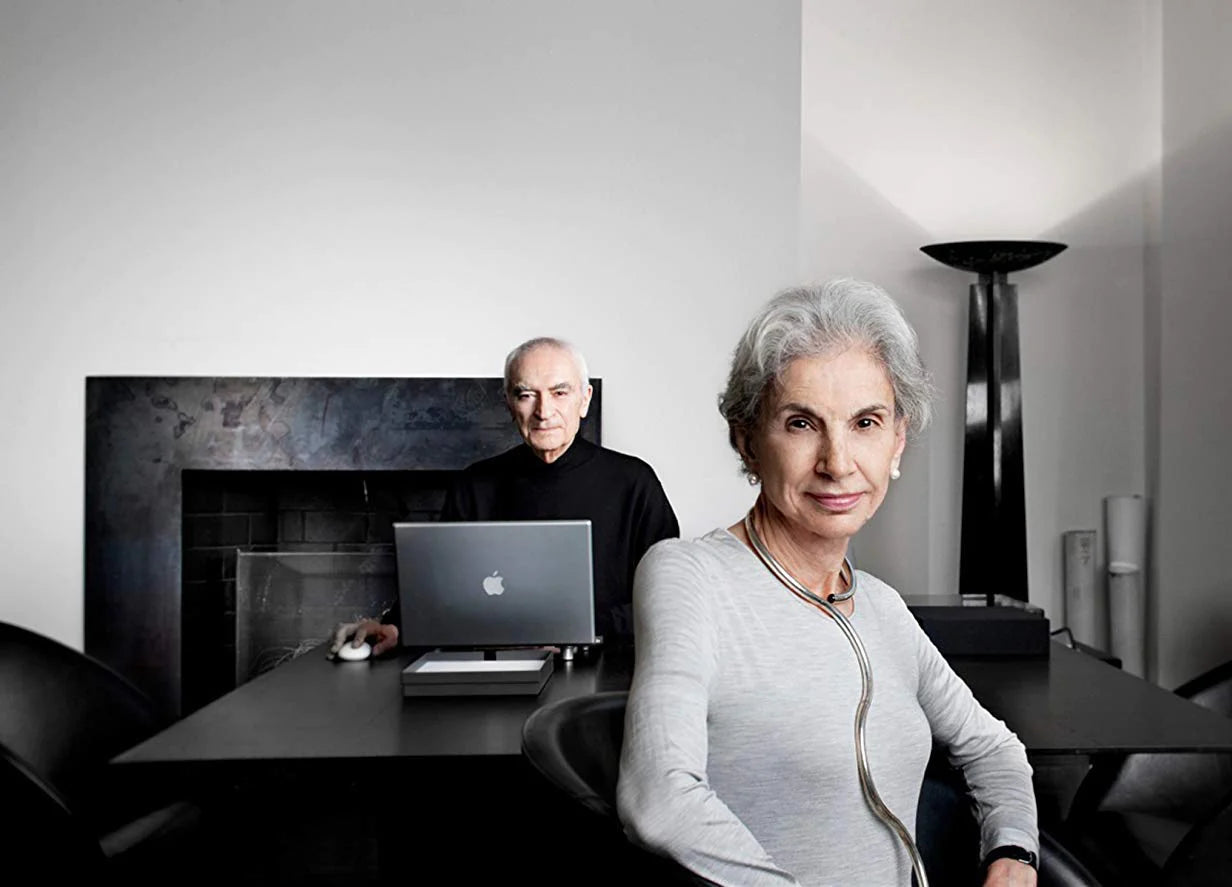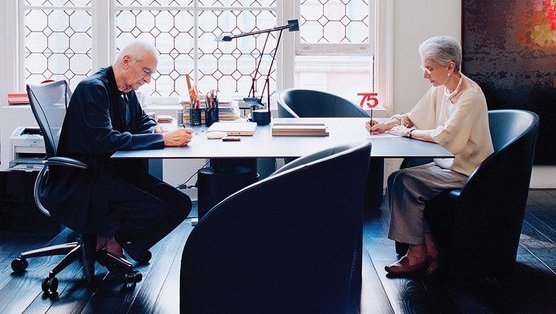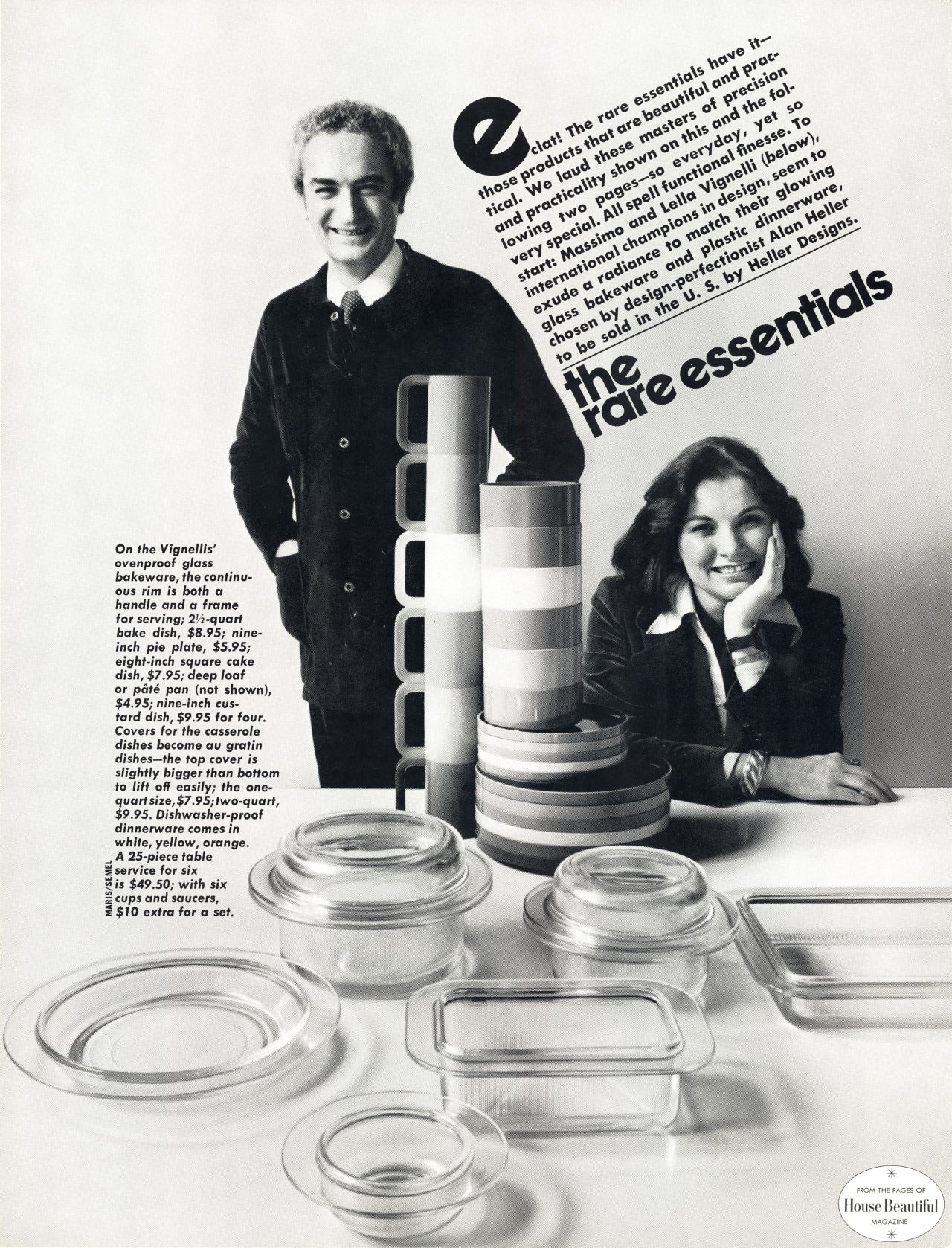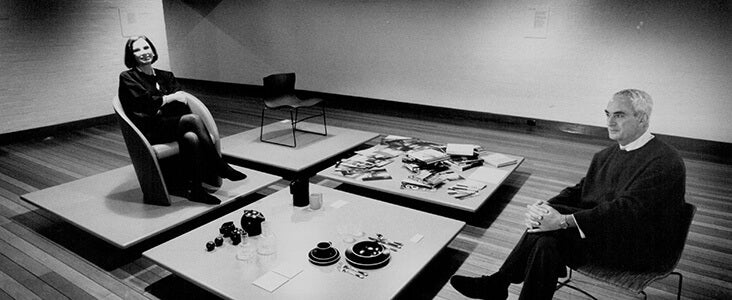
"El diseño es uno." - Lella y Massimo Vignelli
Lella y Massimo Vignelli
Lella y Massimo Vignelli se encuentran entre los diseñadores más influyentes del mundo. Aportaron claridad y coherencia a innumerables proyectos.
Massimo Vignelli comenzó su formación como dibujante a los 16 años en el estudio de arquitectos Castiglione de Milán, donde aprendió el axioma de Adolf Loos según el cual un arquitecto debe ser capaz de diseñar cualquier cosa, desde la cuchara hasta la ciudad.
Massimo dijo: “Desde ese día quise diseñar todo… y aún no tengo ciudades, ¡pero sí muchas cucharas!”

Lella Vignelli nació en Udine en una familia de arquitectos. Ella y Massimo compartían una visión del diseño que influyó en todo su trabajo, ya que ella llevaba la arquitectura en la sangre.
En su libro “Design is One” de 2004, dijeron que si puedes diseñar una cosa, puedes diseñar todo. La idea es que diseñar una cosa significa que tienes la capacidad de diseñar cualquier cosa. La metodología es la misma sin importar el tema”.
Según Vignelli, el diseño debe ser “semánticamente correcto, sintácticamente consistente, pragmáticamente comprensible, visualmente poderoso, intelectualmente elegante y atemporal”.

A lo largo de su larga y productiva carrera, los Vignelli pusieron en práctica estos principios. Entre 1957 y 1960, después de formarse como arquitectos en Italia, la pareja viajó a Estados Unidos con becas. Allí quedó claro que su misión era “un mejor diseño para un mundo mejor”. Los muebles Saratoga y la vajilla apilable de melamina de Heller muestran un estilo de diseño estricto y claro.
Los Vignelli se establecieron definitivamente en Estados Unidos y en 1965 cofundaron la filial estadounidense de Unimark International. Esta consultoría de diseño creó identidades corporativas distintivas para empresas como American Airlines, Ford, Knoll International, las autoridades de tránsito de la ciudad de Nueva York y Washington, DC, y para Heller.
En 1971, los Vignelli abrieron su propia oficina en Nueva York, llamada Vignelli Associates. Trabajaron en una variedad de proyectos que impresionaron por su tamaño y diseño.
Estos incluyen programas de diseño gráfico para el Servicio de Parques Nacionales de los Estados Unidos, Bloomingdales, Lancia, Fratelli Rossetti, el Guggenheim, el Salone del Mobile y Benetton; salas de exposición para Poltrona Frau, Steelcase, Italcenter, Hauserman y Artemide, interiores para el Museo de Bellas Artes de Minneapolis, Joseph Magnin, el Servicio Postal de los Estados Unidos y la Iglesia de San Pedro en Manhattan; exhibiciones para el Louvre y BMW; muebles como la silla Handkerchief (Knoll, 1982-1987), productos para los hoteles Ciga y Heller, y libros para muchas editoriales.
Basándose en el lema “Si no lo encuentras, diséñalo”, los Vignelli también diseñaron su propia línea de ropa.

A lo largo de su dilatada carrera, Lella y Massimo Vignelli aprovecharon sus distintas fortalezas, trabajando juntos y por separado. Massimo percibió lo que se podía hacer y Lella percibió lo que se podía hacer. Su arte se encuentra en museos de todo el mundo, como el MoMA, el Met y el Museo Cooper-Hewitt.
Los Vignelli recibieron numerosos premios. Massimo ganó premios de diseño gráfico en todo el mundo y Lella ganó premios de diseño de interiores. En 2003 recibieron el premio National Design Lifetime Achievement.









